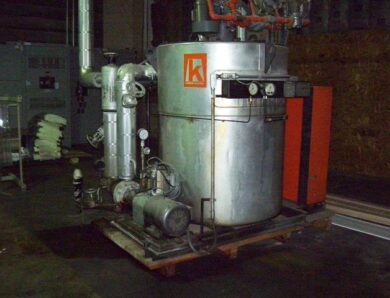
Exploring Sustainable Roofing Solutions
In an age where environmental concerns are at the forefront of global discussions, it’s no surprise that sustainable practices are finding their way into every aspect of our lives – even our roofs. The eco-friendly roof, once a niche concept, has now become a symbol of modern architecture’s commitment to both aesthetics and the planet. Let’s dive into the world of sustainable roofing solutions and discover how these innovative approaches are reshaping the way we think about shelter.
The Need for Sustainable Roofing
Traditional roofing materials, like asphalt shingles and concrete tiles, have long been the norm in construction. However, their production involves substantial energy consumption and the use of non-renewable resources, leading to a negative impact on the environment. Moreover, these materials have relatively short lifespans, contributing to excessive waste in landfills. This is where sustainable roofing steps in as a game-changer.
Green Roofs: A Living Oasis
One of the most captivating sustainable roofing solutions is the green roof. A green roof is a living ecosystem that incorporates vegetation and soil over a waterproofing membrane. These roofs not only provide insulation, reducing energy consumption, but also absorb rainwater, reducing runoff and the strain on local drainage systems.
Green roofs come in two primary types: intensive and extensive. Intensive green roofs feature deeper soil layers, enabling the growth of a wide variety of plants, and they often resemble lush gardens. On the other hand, extensive green roofs have shallower soil and support hardier plant varieties, like sedums. Beyond their environmental benefits, these roofs also contribute to improved air quality and aesthetics in urban areas.
Solar Roofs: Harvesting Energy from Above
As solar technology continues to advance, solar roofs have become an increasingly popular sustainable roofing solution. These roofs are fitted with solar panels that harness the power of the sun and convert it into clean energy. Not only do solar roofs generate electricity for the building they cover, but they can also feed excess power back into the grid, potentially turning the building into a small-scale power plant.
With the integration of solar cells into roofing materials, the aesthetics of solar roofs have greatly improved, making them an attractive option for both residential and commercial buildings. As the cost of solar technology decreases and efficiency increases, solar roofs are becoming a practical and economically viable choice.
Cool Roofs: Reflecting Heat and Light
Cool roofs, designed to reflect more sunlight and absorb less heat than traditional roofs, are another intriguing sustainable option. They typically have a high solar reflectance, meaning they reflect a larger percentage of sunlight, and a high thermal emittance, meaning they radiate absorbed heat effectively. These properties help keep the building beneath them cooler, reducing the need for air conditioning and ultimately cutting down on energy consumption.
Cool roofs can be achieved through various methods, such as using reflective roofing materials, applying reflective coatings, or installing reflective tiles. This approach is particularly beneficial in urban areas, where the “urban heat island” effect – the phenomenon where cities are significantly warmer than their surrounding rural areas – is a growing concern.
Recycled and Reclaimed Materials: Giving New Life
Sustainable roofing isn’t just about the type of roof you choose – it’s also about the materials you use. Recycled and reclaimed roofing materials are gaining traction as environmentally responsible alternatives. Materials like recycled metal, reclaimed wood, and salvaged tiles can be repurposed to create unique and visually appealing roofs.

Recycled metal roofs, for example, are durable, lightweight, and often made from a high percentage of recycled materials. Reclaimed wood shakes or shingles not only offer a distinctive charm but also contribute to reducing deforestation. By opting for these materials, homeowners and businesses can support sustainable practices while enjoying a roof that tells a story.
The Future of Sustainable Roofing
As sustainable roofing solutions continue to evolve, the future looks promising. Researchers and engineers are exploring innovative materials that are not only eco-friendly but also highly efficient and long-lasting. Concepts like self-repairing roofs, which use bio-inspired materials to heal cracks and damage, could revolutionize the roofing industry.
The integration of technology is also shaping the future of roofing. Smart roofs equipped with sensors can monitor environmental conditions, adjust insulation levels, and even communicate with other building systems to optimize energy use. Visit Hastings Roofing Company Minnesota where you will find lots of useful information about roofing.
Embracing a Greener Horizon
The eco-friendly roof is more than just a trend; it’s a step toward a greener, more sustainable future. By embracing innovative materials, designs, and technologies, we can drastically reduce our environmental footprint while reaping the benefits of lower energy bills, improved air quality, and enhanced aesthetics. Whether it’s the vibrant expanse of a green roof, the sleek efficiency of solar panels, or the reflective brilliance of a cool roof, sustainable roofing solutions are proving that our shelters can be both protective and planet-friendly.







